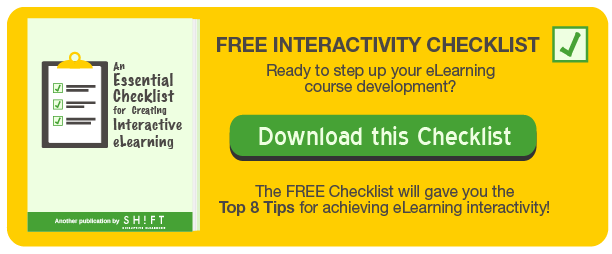
No matter how qualified or competent course developers are, eLearning programs are still prone to fail. The adage “built it and they will come” won’t work. If you’re goal is to build a profitable eLearning program, then you need a clear business model that serves the interests of both your learners and your organization. Many programs are guilty of not having such a model.
Below are some specific mistakes to avoid and prepare for when planning for your next eLearning program.
1) Failure to clearly identify the most pressing business needs.
 This sounds obvious, if not basic, but you’d be surprised to learn how many courses fail to meet business goals.his sounds obvious, if not basic, but you’d be surprised to learn how many courses fail to meet business goals. There are real costs involved in designing eLearning courses. This means two things for your organization: (1) you have to teach and (2) you have to make a business out of it. You’ll be surprised that many measure their success based on responsibility #1 alone, that they can teach something or deliver a course on time. It’s not enough to have a hundred active learners. You have to identify your desired results from a business perspective and make sure your course can meet them. You can, for instance, tie your success to sales.
This sounds obvious, if not basic, but you’d be surprised to learn how many courses fail to meet business goals.his sounds obvious, if not basic, but you’d be surprised to learn how many courses fail to meet business goals. There are real costs involved in designing eLearning courses. This means two things for your organization: (1) you have to teach and (2) you have to make a business out of it. You’ll be surprised that many measure their success based on responsibility #1 alone, that they can teach something or deliver a course on time. It’s not enough to have a hundred active learners. You have to identify your desired results from a business perspective and make sure your course can meet them. You can, for instance, tie your success to sales.
Check if your organization has missed out on this point. Many rush to choosing eLearning without a clear understanding of their business model.
2) Failure to manage learning assets to their fullest potentials.
 It’s very important to learn how to organize and reuse your assets (from static text to interactive videos) early on. Here lies the secret of any profitable eLearning program. Every piece of learning content or data is categorized and saved for future retrieval or re-use. For example, when you want to reuse questions from an assessment in an eLearning course (or visa versa). No single piece is put to waste, unless of course if a data is deemed obsolete. You can rely on eLearning meta-data for classifying and labeling content. Or you can use an authoring tool like SHIFT, where content can be grouped, moved, imported and reused quickly and easily.
It’s very important to learn how to organize and reuse your assets (from static text to interactive videos) early on. Here lies the secret of any profitable eLearning program. Every piece of learning content or data is categorized and saved for future retrieval or re-use. For example, when you want to reuse questions from an assessment in an eLearning course (or visa versa). No single piece is put to waste, unless of course if a data is deemed obsolete. You can rely on eLearning meta-data for classifying and labeling content. Or you can use an authoring tool like SHIFT, where content can be grouped, moved, imported and reused quickly and easily.
Besides reusability, your organization also needs to plan for modularity. You can prepare a small set of templates for your courses. This not only simplifies and speeds up the delivery of your content but also gives your course a consistent look and feel.
3) Failure to include a business context in a training program.
 So what’s the context? You cannot design an effective eLearning program that users and learners can relate to without an appropriate context. If the knowledge learned doesn’t apply or transfer to real work your program will fail.
So what’s the context? You cannot design an effective eLearning program that users and learners can relate to without an appropriate context. If the knowledge learned doesn’t apply or transfer to real work your program will fail.
You can easily create a context that speaks to the real-life challenges and situations by providing scenarios, flow charts, successful (or unsuccessful) business cases and section-introductions that clearly explain the “why” and “when” of your content or material.
4) Failure to consider your target audience.
 This is another issue that seems basic but remains oft-overlooked. It’s so easy to pay lip service to the needs of individual learners and users and difficult to actually keep them in mind throughout the process. What’s more, it’s a real challenge to keep end-users engaged. Some of them need strong support to complete a program and it’s something most eLearning providers terribly fail at.
This is another issue that seems basic but remains oft-overlooked. It’s so easy to pay lip service to the needs of individual learners and users and difficult to actually keep them in mind throughout the process. What’s more, it’s a real challenge to keep end-users engaged. Some of them need strong support to complete a program and it’s something most eLearning providers terribly fail at.
Companies need to make sure that the content is what the learners need . A strong audience analysis helps you to easily recognize how different user groups may benefit from different types of training.
5) Failure to see the real value of content.
 Content quality is perhaps of the most crucial factors that contribute to a program’s effectiveness. Effective writing techniques and instructional design quality are significantly important. How the material is sequenced also is important, as well as how easy it is to use. Media also can vary in quality and impact. A course that is inferior in quality in any of this ways, can lessen the entire program’s impact.
Content quality is perhaps of the most crucial factors that contribute to a program’s effectiveness. Effective writing techniques and instructional design quality are significantly important. How the material is sequenced also is important, as well as how easy it is to use. Media also can vary in quality and impact. A course that is inferior in quality in any of this ways, can lessen the entire program’s impact.
You need to invest your resources in extensive expertise, time, effort and research. This will make the difference between making an investement or a lose for your company.
The adage “built it and they will come” won’t work!
If you want to build solid eLearning programs, then you need a clear business focus that works both for your learners and your organization.









